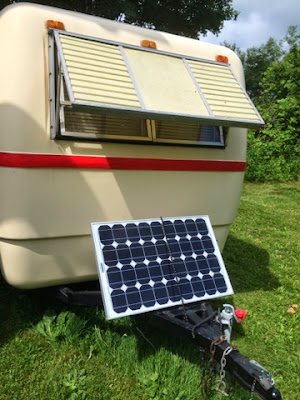When I picked up the Trillium from the previous owner, it was set up to run only on 120 VAC power. That is, without being plugged in to 'shore power' at a campground or such, there was no electric power at all. However, when the trailer left the factory, it had been wired for both 120 VAC and 12 VDC power. The question was, what had been changed over the 37 years of previous owners? Was any of the original wiring still intact?
It was nearly impossible to find out as all the wiring was hidden behind various built-in cupboards and seats and floors. Using a camera I began documenting all the wiring by randomly sticking my arm into nooks and crannies and snapping away. By doing that and piecing the puzzle together, I discovered in the upper photo that the old DC wiring was there as well as a fuse even if I couldn't reach any of it easily.
Some wiring like that seen above was easier to see and reach. This is a mess of wiring behind the cupboard beneath the sink, which includes running lights from the tow vehicle, 120 VAC wiring for the fridge, and 12 VDC for the lights above the sink and stove. Nothing labelled of course, all in a confusing jumble!

All the wires eventually led to or from this unit, the Power Converter. It was here that the 120 VAC was converted into 12 VDC which in turn ran the interior lights and fridge. I chose to bypass this unit so that today, the two electrical circuits are totally separate. The 120 VAC will still power the fridge if I wish and a reading lamp and some power outlets. All the 12 VDC power, except the running lights which are tow vehicle powered, is supplied by a deep cycle battery which is recharged by a 50 watt solar panel outside. The panel can be plugged in and moved about to take advantage of the sun's position depending on how the trailer is parked. So far it's all that's required to power the day to day operation of the Trillium. I'll get to the solar set up in another posting.







































